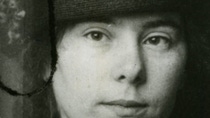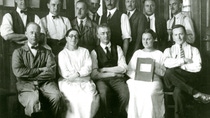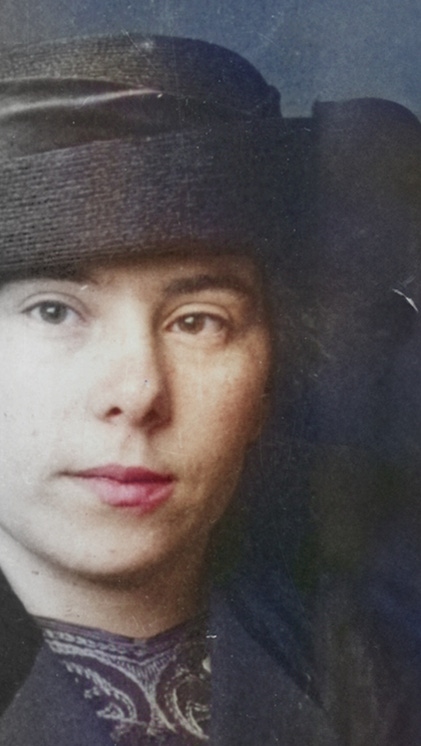Who we are
Dr. Marie Regina Schuster - Death in Auschwitz
_L%2021599-2_11%20Dr.%20Marie%20Regina%20Schuster.jpg)
Lifetime: 1890-1944
Profession: Chemist
Employment at the plant: 1920-1925
Grounds for discrimination/persecution: Jewish [as per NS definition]
Fate: Self-resignation; detention; deportation; murdered in Auschwitz concentration camp
She was one of the first female chemists to work at BASF. A degree, especially a doctorate, was still a rarity for women at the time. Dr. Marie Regina Meyer, later known by her married name of Schuster, began working at the main laboratory in Ludwigshafen in September 1920. She had just turned thirty. As was typical for women in this field at the time, she primarily performed “literary work” – organizing, reviewing and cataloging internal scientific, mainly chemical, reports to make them easier to access for research purposes. As her job reference would later show, she was mainly responsible for setting up and managing an office dedicated to these tasks.
_53874%20Chemiker_1925.jpg)
[Source: BASF Corporate Archives / Photographer: unknown]
“Staunch opponents”
The early 1920s was an eventful time in Schuster’s private life, too. She married her colleague Dr. Curt Schuster in 1924, and their daughter Dorothea was born in late 1925. In June 2025, Marie Schuster left BASF to focus on her family responsibilities – not unusual for women at the time. But Marie Schuster appears to have been an exceptional woman, and exceptionally courageous with it.
Politically, the Schusters could be described as liberal, and they believed in the new Weimar Republic. In 1927, they became active members of the left-wing liberal German Democratic Party (DDP). It must have been a happier and, above all, freer time in the life of the young family. Marie Schuster’s Jewish descent did not – as yet – impact her daily existence. That changed when the National Socialists seized power in 1933. However, the couple’s political convictions and fighting spirit were left unshaken.
We both took an active interest in the political life of the time [ …]. We were staunch opponents of the emerging Nazi movement and made no secret of this among our friends and acquaintances, which soon led to heated disputes. For it soon became apparent that those in nationalist circles backed Hitler’s movement to a greater or lesser extent.
“The power of circumstances”
The politically active couple’s open rejection of National Socialism increasingly caused them difficulties. Marie’s Jewish roots made the situation even more dangerous for the family. Her mother, Hermine Eleonore Meyer, who had been living with the Schusters in Ludwigshafen since the late 1930s, committed suicide on July 18, 1942, a few days after receiving the news that she was to be deported to Theresienstadt.
Two letters written by Curt Schuster illustrate how devastating this news must have been for the entire family. In these letters, written before his mother-in-law’s suicide, Curt sought help from Ludwigshafen’s plant manager (Dr. Carl Wurster) and the chairman of the supervisory board of I.G. Farben (Dr. Carl Krauch): “Due to the power of circumstances, my family and I find ourselves in a dire situation. In my distress, I am turning to you in pure human trust with a request for advice and, if you think it is possible, for help.” We do not know whether his request for a face-to-face meeting was fulfilled. In any case, help came too late.
In April 1943, friends of Curt and Marie Schuster who had helped hide a Jewish couple and listened to foreign radio broadcasts were ultimately arrested. Just one month later, the Schusters were also arrested for “radio crimes.” [Nazi terminology] Both were initially imprisoned in Ludwigshafen, where they happened to see each other again. It proved to be their final meeting.
Curt was put on trial. Marie remained imprisoned without trial, first in Ludwigshafen and then in Frankenthal. In February 1944, she was deported from there to Auschwitz. “Attempts to arrange for her employment as a chemist at the chemical plant in Auschwitz, which was partly under BASF’s [I.G. Farben's Ludwigshafen/Oppau plants'] influence, through colleagues were unsuccessful,” Curt Schuster later wrote in his account of his experiences. As a convicted prisoner, Curt was powerless to assist his wife.
More about the connection between the I.G. Farben works at Ludwigshafen/Oppau and Auschwitz-Monowitz
1944: A final birthday in Auschwitz
Just a few weeks following her arrival in Auschwitz, and shortly after her 54th birthday, the concentration camp death certificate shows that Marie Schuster died on March 14, 1944. The cause of death was listed as phlegmon – an acute inflammation of the soft tissues – at least according to her husband. He only heard of his wife’s death in April 1944, and bitterly added: “We now know that medical experiments were conducted on phlegmon patients in Auschwitz.”
Based on what we know now, Marie Schuster is the only employee or former employee of the Ludwigshafen and Oppau plants who was Jewish or of Jewish descent to have perished in a concentration camp.
Her husband and daughter survived the Nazi regime. Curt Schuster endured imprisonment and forced labor at the I.G. Farben plant in Leuna, while Dorothea Schuster initially stayed in Ludwigshafen and later lived with an aunt in Marienberg, Saxony. Both returned to Ludwigshafen after the war, where Curt Schuster also resumed his work at the Ludwigshafen plant.


